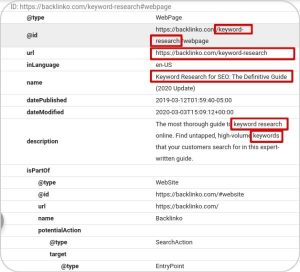— March 1, 2018

geralt / Pixabay
All over the world, digitization services firms are queuing up to help small businesses integrate their operations into the global economy. Businesses everywhere are expected to spend more than $ 2 trillion on digital transformation projects by the end of 2019. That includes projects that build on established tech like mobility, big data, VoIP telephony, and cloud-based IT, as well as emerging tech such as deep learning AI, collaborative robots, and IoT-to-blockchain architectures.
But digital transformation doesn’t have to be that experimental or ambitious. Smaller businesses have a great deal to gain from basic digital transformation projects that simply make it possible to handle more jobs by shortening the turnaround time or accept larger jobs using existing staffing.
Putting a dollar value on digital transformation
Success in digital transformation can add up to substantial performance improvements. A recent study by Harvard researchers found that top digital transforming companies posted higher gross margins, stronger earnings and more income filtering through to the bottom line than digital laggards. In fact, leading digital performers posted a 55% gross margin for the past three years, compared to slower digital adopters who posted just 37%.
Along the same lines, McKinsey’s study of success factors in digital transformation concluded that,
“Digital rewards first movers and some superfast followers.”
In hard numbers, their study found that early digital adopters enjoyed 2X the revenue growth of competitors who took a wait-and-see approach. Later adopters of digital will still be able to improve internal efficiencies and sales results, but they may be transforming simply to catch up with competitors instead of striving to pull ahead.
Making the first move
One of the biggest roadblocks to digital transformation, especially for a small business operating on tight margins and tighter schedules, is deciding on where to begin.
Many businesses near the break-even point can’t afford to bankroll failed projects or wait indefinitely to see financial results. They have to get it right pretty quickly because the wrong investment or implementation can be hard to contain when it goes off the rails.
As owners or IT managers build out their company’s tech stack based on a digital transformation plan, each software or hardware component brings both limitations and opportunities. It is nearly impossible on the front end to grasp all the potential outcomes of any single component added to the larger digital architecture. Inevitably, there will be a few surprises. But a smart strategy and thoughtful execution can eliminate unnecessary pain while freeing up money from cap ex to fund the next layer of your digital evolution.
5 Considerations in Goal-Setting
To gain insights on where to begin, be clear on what you hope to gain from each piece, and which projects can be expected to deliver the greatest ROI in the shortest turnaround. In setting their goals and expectations, small businesses should start from what matters most to them, such as:
- How to offer a better customer experience and reduced churn
- How to secure productivity gains and reduce operational expenses
- How to get better data and advanced analytics to make better decisions
- How to be more agile and adapt to market changes before competitors do
- How to found or join a wider digital ecosystem of suppliers and partners
Project teams can build on any of the above goals or come up with their own, but they should start by setting goals that support the company’s strategic plan. From a projection of where the company wants to be in a year/5 years/10 years, the team can decide what sorts of digital tech will do the most good for a specific business model. For example, if organizational efficiency is the first goal, a digital transformation project should prioritize streamlining back office processes while maintaining output. That’s very different from the sort of tech that is centered around improving customer engagement. Although both are important, knowing where the greatest impact can be gained can help businesses focus their efforts.
The full roadmap: from short term vs. long term
Regardless of how a project team sets priorities, the business strategy should ultimately be comprehensive, comprised of projects for the short term, the middle term, and the long term. The short term projects should be able to be implemented right away without waiting on partners or market conditions, making only minimal changes to the business model. These should have hard deadlines and specific ROI metrics.
Middle term projects should emerge more out of a brainstorming of possibilities that would require to business to bring in new skills, maybe new employees or outside contractors as partners. These are projects to be completed 1-5 years in the future.
The long term projects should investigate the feasibility of major projects that can remake the business model over the coming decade. It may take the business into entirely new directions and industries.
ROI and profitability do not apply. This is about planning business continuity after the businesses value proposition doesn’t apply anymore. Plan for the unpredictable to be ready when disruptions hits.
A complete roadmap will help teams navigate obstacles and make decisions as conditions evolve. Some digital transformation projects bring quick rewards, others pay off more slowly. Very often, the most impactful changes will take the most time to return gains because they require the largest investment, both in terms of the financial and cultural capital required to implement. However, digitization and automating manual processes will free up resources and help fund bigger projects in the end.
Having an eye on the big picture can help a business stay on track, even when harvesting the low-hanging fruit of small digital transformation projects. This can help prevent the common problem of committing to decisions that have a small short-term payoff and big long-term cost.
Deciding on growth vs profit
Another essential question that impacts the success rate of digital transformation projects is whether a company is focused on growth or profits. Of course, both are desirable, but only one can take precedence at any given time.
In the earliest stages of launching a new business, costs per revenue earned are normally too high to justify a profit strategy. Growth should take precedence until the company finds a way to turbocharge sales (along with the resources to easily add productive capacity to meet those promises) or to maintain output with lower incremental operating costs.
At some point, the costs to acquire new customers should fall to a rate where the management can safely project out revenues. That’s an ideal time to ease off the growth accelerator and start directing profits in the search for new business models. The search for innovative business models and greater market agility will bring the strategy team back to questions where digital transformation holds the answers.
There are many areas where digital could impact your performance, but it makes the most sense for a small business to start with a digital transformation project that can pay for itself or at least provide a high enough ROI to fund the next round of digitalization. An early win generates stronger employee buy-in and forward momentum.
Consider one of these ways to see the greatest impact with the smallest investment:
Automating administration in the back office
Far from being a tool for large enterprises, digital transformation has a leveling effect. A survey from SAP and the IDC found that:
- 49.3% of IT decision-makers said digital helped small businesses compete more effectively against larger competitors
- 40.8% said that smaller companies could move more quickly in taking advantage of digital innovations
Specifically, the study cited a case study of a retailer who digitized as many back office processes as they could, from finance to human resources to managing the supply chain. This relatively simple project had an outsized result, boosting their product portfolio by 230% and dialing up revenue by 330%. Instead of employee growth, they poured those profits into data analytics and moving management tools into mobile platforms that could be accessed from anywhere.
Improving the customer experience for field service
Small businesses don’t have to mean small operations. Many new business models are based on small groups of full-time employees in administrative roles and large numbers of freelancers or contractors doing field service work. That’s true in home healthcare, physical therapy, retail/restaurant delivery services, on-site technical support and even digital versions of traditional maintenance contracts.
While larger field service operation have saved up to $ 20 million in annual costs due to digitizing workflows, smaller companies with remote crews have benefited more on the experience side, with insight-enriched customer relationships. ATKearney reported digital transformation results that included:
- Improved routing and remote monitoring technology, which allowed the company to deliver 40% more deliveries per mile
- Better mobile communication platforms added 30 hours per work week in the customer service department, making more time for upsells and cross-sells
- Automated auditing to practically eliminate billing errors, further improving brand quality for the customer
Interacting with customers and fixing complex problems by hand are two tasks that may never be automated, but every other logistical process can be streamlined.
Replacing legacy phone systems with mobile platforms
A host of emerging business models are just beginning to capitalize on the new global marketplace of on-demand services. These concepts depend on next-generation technology, especially more agile communication networks. For a small business, the legacy phone system was often responsible for the largest investments in hardware and software. The sound quality and the capabilities of the system will affect everything from brand perception to the productivity of collaborations.
Two decades ago, an early digitization project involved replacing traditional PBX systems and on-premise servers with voice over IP (VoIP) and software as a service (SaaS). These systems greatly reduced capital expenditures but at the cost of a sound quality that was too dependent on network stability. The other big problem was that any changes like add/delete/move user normally required access to IT experts, which could slow down business to a crawl.
Today, digital transformation in communications means moving the entire infrastructure — desk phones and admin software — into a virtual platform deployed across employee mobile devices.
A digital-only phone system can be set up in minutes and connect the next generation of flexible workers who are distributed across town or across time zones. Because it exists only in the cloud, this system can scale as fast as your business does, both up and down according to market demands. As new technology and popular features become established globally, a virtual phone system incorporates the changes and expands its value to the business.
The 4S test and 3 essentials for digital transformation
These systems fulfill the “4S” requirements of the most effective digital projects:
- Simplicity
- Security
- Savings
- Scalability
In the future, everything that can be described in a step-by-step process is likely to be turned over to digital agents. In the meantime, digital transformation projects that succeed tend to share three characteristics: they start with business leaders who can clearly state the desired outcomes, they are developed by a team aligned around the company’s strategic priorities and they don’t come to a resolution without input from employees with the greatest relevant experience in the tasks that are being reimagined.
Business & Finance Articles on Business 2 Community
(35)








